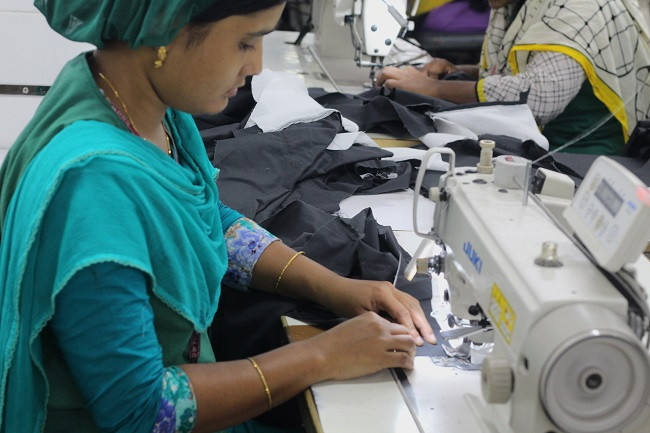The garment industry in Bangladesh is a pivotal sector that drives the country’s economy, contributing significantly to its foreign exchange earnings. However, the path to sustaining and growing this industry is fraught with challenges, particularly in the context of order completion, financial management, and sector-wide support. With the strength of its three pillars, the industry is moving forward with an ambitious vision of achieving a $100 billion export target by 2030. This goal, however, seems impossible without robust government support.

The Three Pillars of the Garment Industry
The foundation of Bangladesh’s garment industry rests on three critical pillars: Banking support, back-to-back letters of credit (LC), and bond facilities related to the National Board of Revenue (NBR). These elements form the backbone of financial and operational stability within the sector.
- Banking Support: Access to banking facilities is crucial for financing the various stages of production. Adequate bank support allows factories to manage their cash flow and operational costs effectively.
- Back-to-Back LC: This financial instrument helps manufacturers secure the necessary raw materials without immediate payment, enabling smoother production processes and ensuring timely delivery of finished goods.
- Bond Facilities: Related to the NBR, bond facilities provide tax incentives and facilitate the import of raw materials under favorable terms, which is vital for maintaining competitive pricing in the global market.
The Role of a Disciplined Workforce
A disciplined and dedicated workforce is perhaps the most significant asset of the Bangladeshi garment industry. The commitment and hard work of millions of workers have been instrumental in the sector’s growth and resilience. Their ability to adapt to changing demands and maintain high standards of production quality is a key factor that continues to drive the industry forward.
Order Completion and Financial Strain
One of the foremost challenges faced by the garment industry is the extended timeline required for completing orders. While the actual production time spans 70-90 days, the entire process, from order acceptance to negotiation, can extend up to 6-7 months. This prolonged period places considerable financial strain on factories, which must cover operational costs, including worker salaries, without receiving payment for the orders until much later.
The lack of adequate bank support further exacerbates this issue. The financial requirements for managing large-scale operations, amounting to billions of dollars, are substantial. Without sufficient bank financing, factories must rely on their resources, which can be both risky and unsustainable. This situation underscores the need for more robust financial mechanisms to support the industry through its extended production cycles.
Economic Significance and Government Support
The garment sector is a cornerstone of Bangladesh’s economy, serving as one of the primary foreign exchange-earners. The government’s support for this sector has been substantial, providing various incentives and developmental initiatives. However, given the sector’s critical role, more focused attention and resources are needed to ensure its continued growth and resilience.
In addition to government support, collaboration among industrialists and engagement with foreign donor groups are essential. These stakeholders can provide the necessary investments, expertise, and market access to bolster the industry’s capabilities. Encouragingly, there has been a growing recognition of the need for a concerted effort to support the garment sector, and this momentum should be sustained.

Collaborative Efforts for Economic Growth
Our government, along with garments trade bodies, organizational leaders, and industry owners, is working together to achieve the ambitious export target of $100 billion by 2030. This unified effort is essential for driving economic growth in Bangladesh. By leveraging the strengths of the three pillars and ensuring strategic management of orders, the industry can navigate its challenges and capitalize on its potential.
Moving Forward: Strategic Management and Resilience
To achieve the ambitious export target of $100 billion by 2030, the garment industry must address its current challenges while leveraging its strengths. Effective management of orders is critical to navigating the financial complexities of the industry. Decision-makers must base their actions on accurate and up-to-date data to avoid overcommitting their resources. Evaluating the feasibility of taking on new orders, ensuring factory capacity, and maintaining financial discipline are key to sustaining operations and avoiding pitfalls.
Furthermore, continuous efforts to write about and advocate for the industry’s needs are vital. Constructive feedback, shared experiences, and collaborative problem-solving can help refine strategies and support the sector’s growth. This collective effort will ensure that the garment industry not only survives but thrives, returning to its traditional strength and contributing even more significantly to the national economy.
Conclusion
The garment industry in Bangladesh stands at a crossroads, facing significant challenges but also possessing immense growth potential. Addressing the financial strains, managing orders strategically, leveraging government and external support, and fostering resilience through crisis management are essential steps toward a sustainable future. Supported by the critical pillars of banking, back-to-back LCs, bond facilities, and a disciplined workforce, the industry can continue to be a driving force in Bangladesh’s economic landscape. Achieving the $100 billion export target by 2030 will require concerted efforts, but with the right support and strategic approach, it is an attainable goal.
Management must be transformed in all aspects of integration eliminating silo mentality management and balancing well management of four pillars framework – Planning, Organizing, Leading and controlling at every section led by country origin manager and at body corporate.
Need investment in People, Product, Function, Process and System to integrate all the processes in single grid building up country origin manager and successor without relying on solely person itself. We all should remember that Privilege and policy support are not to be in life long for a single industry.
I am a very small boat in an ocean, sharing my thoughts with my limited knowledge. I have seen many ups and downs in this sector due to my father’s involvement in this business since childhood. I myself have suffered a lot during the Corona situation. Even then, whenever I get a chance, I write for the sake of the textile sector of the country. If there are any mistakes in my writing, I apologize.
















